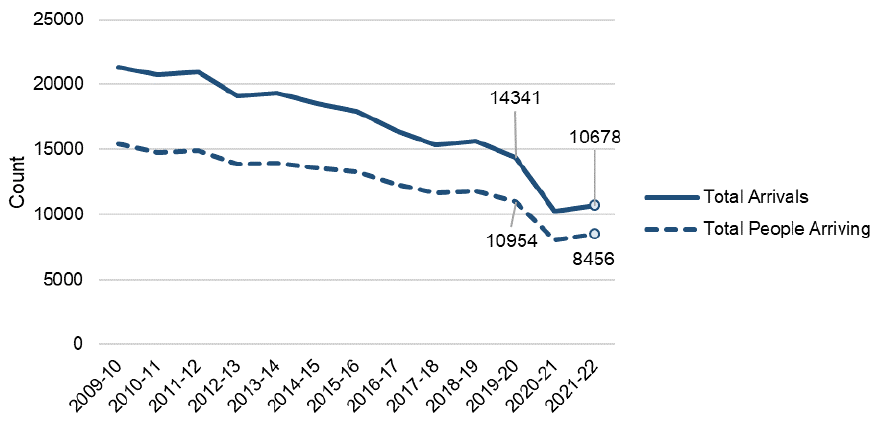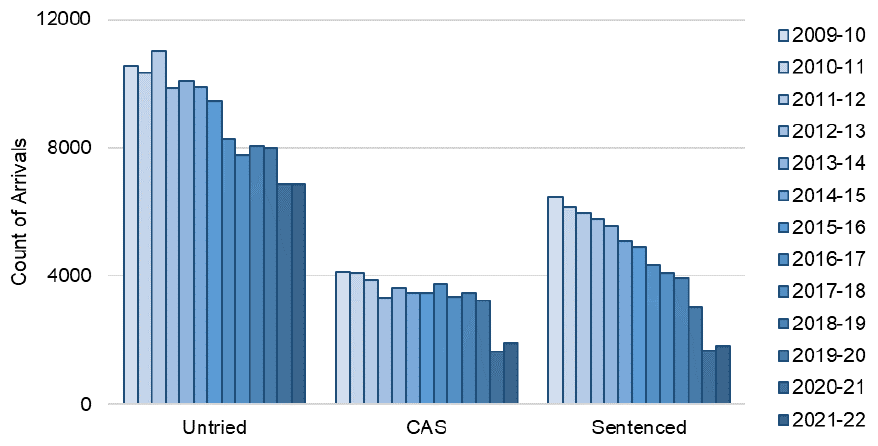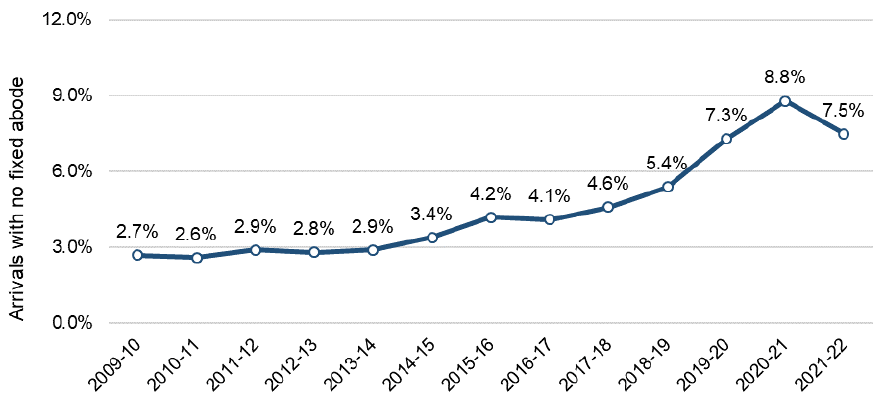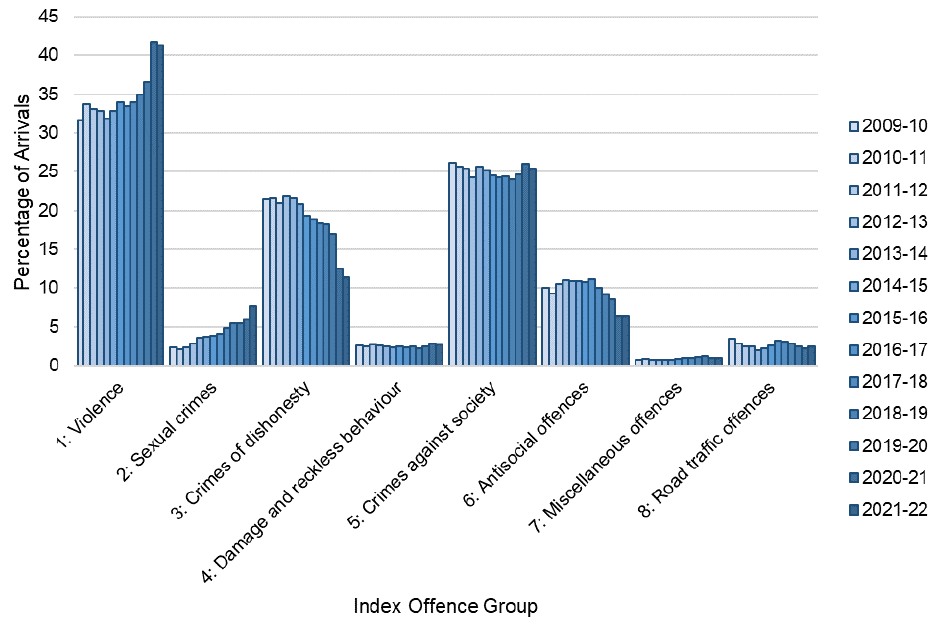Scottish Prison Population Statistics 2021-22
The latest longitudinal statistics on prison populations and flows into and out of prison. Includes information about the demographics of people in prison, the time they spend there, their sentences and offences.
This document is part of a collection
7 Population In-Flows
7.1 Arrivals to prison
[Supplementary Table C1]
An arrival[31] is where a continuous period of imprisonment begins for an individual, and is only counted as such if the arrival occurred on a separate day from any previous departure for that individual. Individuals can arrive to custody more than once each year and so a single individual may be counted more than once when analysing arrivals.
As per the patterns seen for the average daily population and the number of individuals spending time in custody, there is a pattern of broad stability in the number of arrivals to custody between 2020-21 and 2021-22. There were 10,678 arrivals to custody in 2021-22, an increase of around 4%. The number of arrivals has been considerably lower than pre-pandemic levels for the last two reporting years (see Figure 18).

7.2 Arrivals by legal status
[Supplementary Table O1]
Figure 19 shows the number of arrivals varies by legal status category. Arrivals across all legal status categories are still below pre-pandemic levels but the distribution of arrivals across the categories is broadly similar to that in 2020-21.

Reflecting the Covid impacts on the operation of the justice system (see Section 1.1), convicted awaiting sentence and sentenced arrivals remained at considerably lower levels than pre-pandemic, albeit with small increases in both categories between 2020-21 and 2021-22. Convicted awaiting sentence arrivals increased by 16% to 1,916 and sentenced arrivals increased by 10% to 1,836. Untried arrivals decreased from 6,875 to 6,859 – a decrease of just 16 arrivals in total.
Untried arrivals accounted for 64% of all arrivals to prison in 2021-22 (compared to 67% in 2020-21).
7.3 Arrivals by local authority
[Supplementary tables C2]
Arrivals to prison remained broadly similar across all local authority areas between 2020-21 and 2021-22. The rate of arrival increased by a small amount from 1.8 per 1,000 head of population in 2020-21 to 1.9 in 2021-22[32].
Dundee City retained the highest rate of arrival at 3.6 per 1,000 population in 2021-22, although other local authorities had similar rates of 3 or more per 1,000 (Clackmannshire at 3.3 per 1,000 and East Ayrshire at 3.0 per 1,000).
7.4 Arrivals by deprivation
[Supplementary tables C3]
There was little change to the previously reported pattern of arrivals to prison being most likely from the 10% most deprived areas of Scotland – a consistent pattern over the past decade[33]. The 10% most deprived areas of Scotland accounted for 31% of all arrivals to prison in 2021-22 - a small reduction from 34% in 2020-21.
7.5 Arrivals by no fixed abode
[Supplementary tables C4]
In 2021-22, 7.5% of arrivals to prison were individuals registered as of no fixed abode (Figure 20) , a reduction from 8.8% in 2020-21[34].

7.6 Arrivals by offence group
[Supplementary tables O6]
The number of arrivals across the index offence groups[35] remained at very similar levels between 2020-21 and 2021-22. The exception to this is the number of arrivals for Group 2 (Sexual) offences. These increased from 614 in 2020-21 to 820 in 2021-22 – a rise of 34%. Arrivals for Group 2 index offences are the only group where there has been a ‘recovery’ to pre-pandemic levels.
Reflecting the broad similarity in arrivals by index offence group between 2020-21 and 2021-22, the share of arrivals remained broadly similar across the two reporting years Figure 21. Notable changes include the increase in the proportion arriving with index sexual crimes (7.7%, +1.7%pts) and reduction in the proportion arriving with index crimes of dishonesty (11.4%, -1.1%pts) between 2020-21 and 2021-22.

Contact
Email: Justice_Analysts@gov.scot
There is a problem
Thanks for your feedback